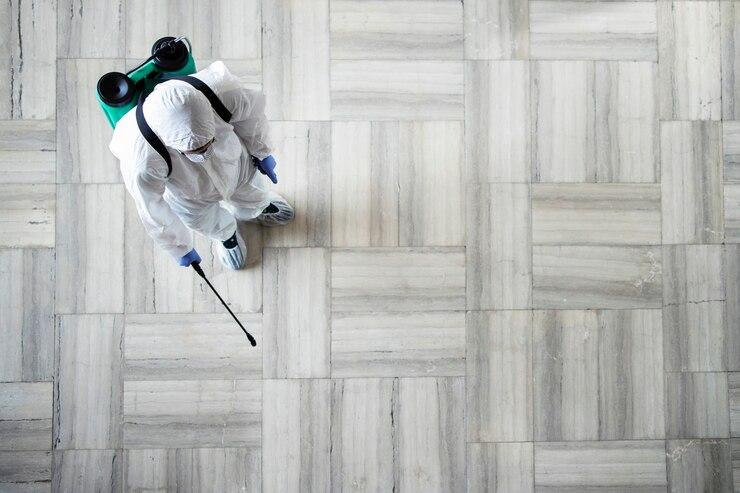
Termites are hidden intruders capable of causing significant damage to your home. At Pest Blaster, we specialise in identifying the subtle but significant signs of termite infestation before it’s too late. Knowing what to look for can save you thousands in repairs and protect your property from structural damage. Termites don’t make noise, but they certainly leave traces of their presence. You might not even realise they’re there until the damage becomes noticeable. If you suspect termites, knowing the signs early can prevent a full-scale infestation. Let’s dive into the most common red flags that termites have taken up residence in your home.
Identifying the subtle signs of a termite infestation is crucial to preventing serious structural damage. These signs may include hollow-sounding wood, discarded wings, mud tubes along walls, or tiny cracks in plaster. Detecting these early warning signals can help you take action before the infestation worsens.
Timber that should be solid suddenly sounds hollow when tapped. This is one of the surest indicators that termites are at work. They consume the wood from the inside out, leaving only a thin timber veneer. Tap along door frames, skirting boards, or any wooden furniture and listen closely if it sounds empty, termites might be inside.
Termites are surprisingly clever builders. They construct mud tubes, also called termite tunnels, which are small, pencil-thick structures that they use to travel between their food source and their colony. These tubes are often found along walls, foundations, and crawl spaces. Finding these tubes is a surefire sign of active termites.
Termites reproduce through a swarming process, where winged termites leave their nests to form new colonies. Once they land, they shed their wings. Finding piles of tiny, translucent wings near windows, doors, or other entry points in your home means termites are nearby or already inside.
Have you noticed odd bubbles or an uneven paint job on your walls? This could be a sign of moisture build-up from termites tunnelling inside the walls. As they eat through the timber, they allow moisture in, which can cause the paint to warp or blister. Though often mistaken for water damage, this is a common indication of termites beneath the surface.
Termites are meticulous about maintaining cleanliness within their tunnels. They push out their waste, known as frass, through small holes in the wood. These droppings look like tiny, wood-coloured pellets and often accumulate near doors, window sills, or other wooden structures. Spotting frass is a clear sign termites are nearby.
When termites start consuming the internal structures of your home, such as floor joists or ceiling beams, the weight distribution becomes uneven. This can cause the floors or ceilings to sag or dip slightly. If you notice areas of your home where the floor feels soft underfoot or the ceiling appears uneven, termites may have compromised the integrity of the structure. Don’t ignore these signs; what might seem like minor sagging could indicate extensive termite activity beneath the surface.
Surprisingly, termites can be quite noisy pests. When termites are busy munching on wood, you may hear faint clicking sounds coming from your walls. These sounds are produced by worker termites as they chew through timber. In some cases, termites will even bang their heads against the tunnel walls to warn the colony of potential threats. If you hear mysterious clicking or rustling noises, particularly at night, it’s time to consider pest inspections, as termites may be active inside your home.
As termites consume wood and compromise your home’s structure, cracks may begin to form in your walls or ceilings. Termites and your home are a concerning combination, as these cracks often result from the shifting or settling of weakened timber. Keep an eye on any unusual or expanding cracks in plaster, brick, or ceiling corners what may seem like normal settling could actually be a warning sign of termites damaging your home from the inside.
Termites are silent but destructive pests that can cause significant damage to your home if left unchecked. If you notice any of these signs, whether they are hollow timber, mud tubes, or frass, don’t wait. Contact us immediately for a comprehensive inspection and effective termite control solutions. Protect your home before the damage becomes extensive. Get in touch with our team today to schedule your inspection.
Termite mud tubes are small tunnels constructed with soil and wood particles. The tunnels of termite mud are used by the termites in crossing areas between their nest and the food source, hence protected from the open air. They are typically found on walls, foundations, and crawl spaces.
If the wood sounds hollow when it’s tapped, especially if it’s supposed to be solid, then chances are termites could be inside. In feeding, termites eat from the inside out so that, at times, only a thin outer layer of wood is left.
Yes, termite tunnelling behind walls can allow moisture to seep in, causing the paint to blister or bubble. This can often be confused with water damage, but it’s a key sign of termite activity.
Discarded wings are a strong indicator that termites have been swarming near your home. These wings come from the reproductive termites, or swarmers, which shed their wings after finding a new place to start a colony.
While DIY termite treatments exist, they often fail to eliminate the entire colony. Professional termite control ensures complete eradication and helps avoid future termite infestations.
Frass is termite droppings that resemble small wood-coloured pellets. Finding frass around your home is a clear sign of termite activity and indicates that termites are tunnelling nearby.
Pest Blaster services are one of the prominent pest control services that offer the best to the clients. We have a long chain of clients who are happier with our work.


Copyright © 2025 Pest Blaster. All Rights Reserved.